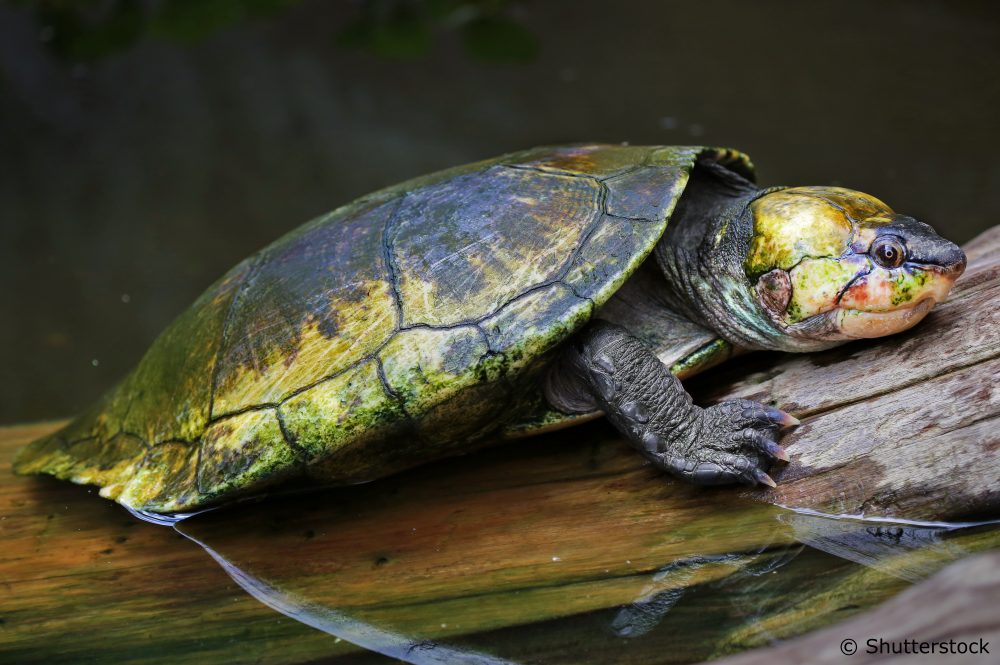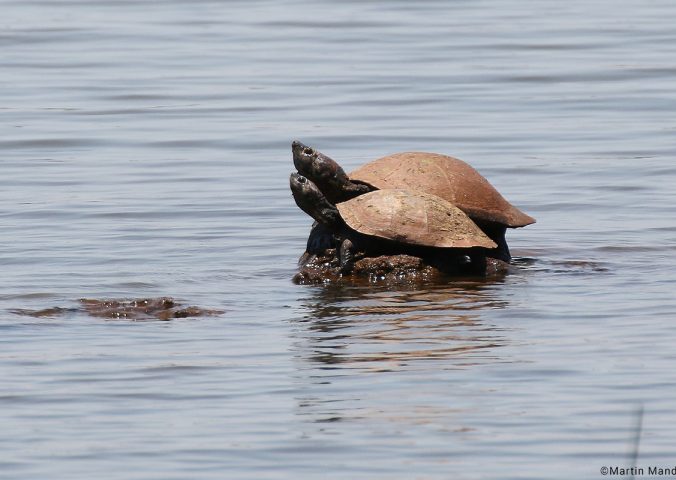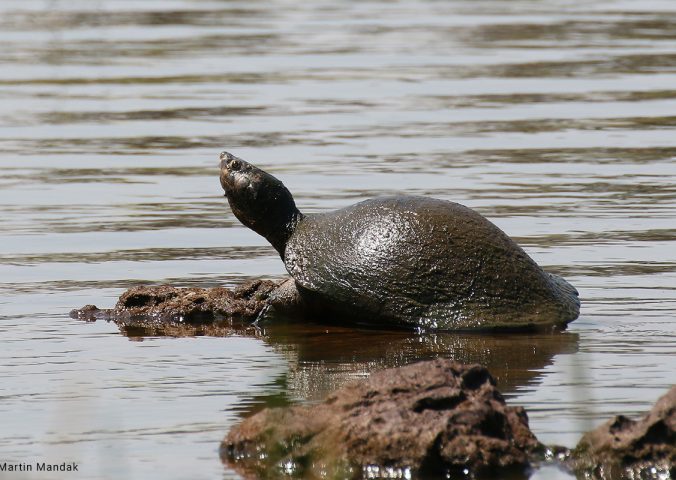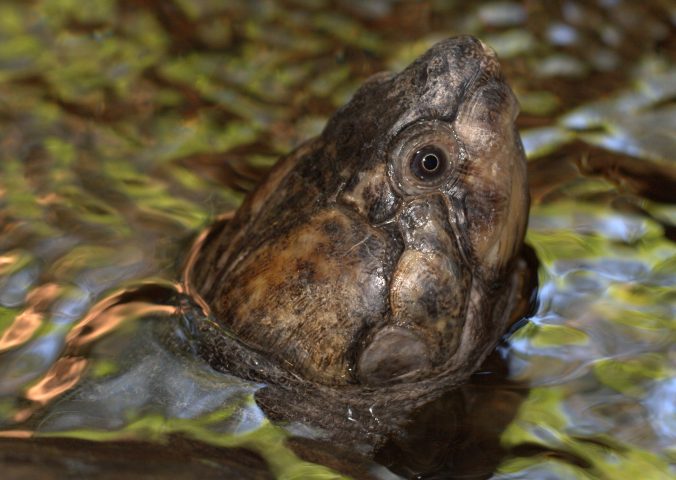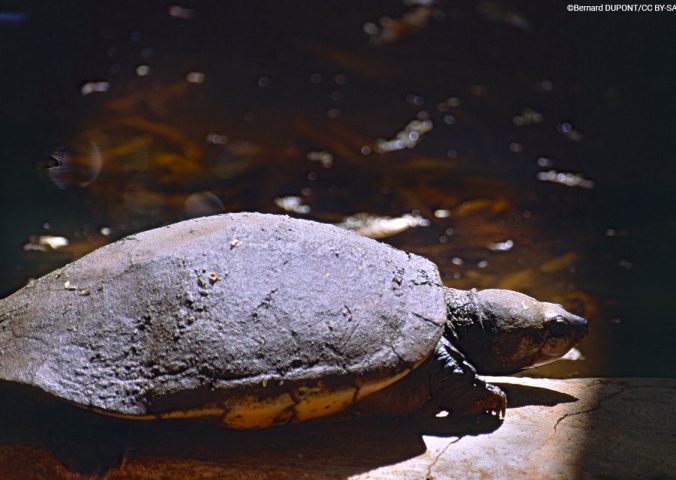About
The Critically Endangered Madagascar big-headed turtle is the world’s most Evolutionarily Distinct and Globally Endangered reptile. In fact, this species has the highest EDGE score of any terrestrial vertebrate!
The Madagascan big-headed turtle is a unique and prehistoric reptile. The species is endemic to lowland waterways and wetlands of western Madagascar, where adults feeds upon molluscs and plants and scavenges dead animals. As its name suggests, this turtle has a particularly large head relative to its body. Due to its colouration, it can sometimes appear to have large plates of gold armouring its over-sized head and body.
This turtle, the sole surviving species in its genus, sits alone at the end of a branch of the tree of life which stretches back more than 80 million years to the age of the dinosaurs. To put that in perspective, our branch of the tree of life is a mere twig, stretching back only 7-10 million years before we meet our common ancestor with chimpanzees and bonobos.
Unfortunately, this species is listed as Critically Endangered by the IUCN Red List due to drastic population declines in the past century. This species is also listed as one of the world’s 25 most endangered turtles by the Turtle Conservation Fund. The Madagascar big-headed turtle is under threat from human exploitation for food, habitat degradation and fragmentation. Unfortunately, most populations occur outside protected areas, and even those inside are subjected to exploitation.
However, the species is listed in CITES Appendix II and conservation efforts are underway. These include captive breeding, community education and population monitoring programmes.
- Order: Testudines
- Family: Podocnemididae
- Population: 10,000
- Trend: decreasing
- Size: 50 cm (?)
EDGE Score
Distribution
The Madagascar big-headed turtle is found only in the western lowland river basins of Madagascar. Despite having an extent of occurrence of 20,000 km2, the true area occupied by the species is thought to be as small as 500 km2.
Habitat and Ecology
The Madagascar big-headed turtle prefers slow-moving waterways and wetlands, where it can bask on exposed logs and rocks. Dietary analyses have shown the species to feed on aquatic invertebrates, molluscs, carrion and plants. Females nest between september and January, when they lay an average of 13 eggs. Females appear to breed once every two years.
